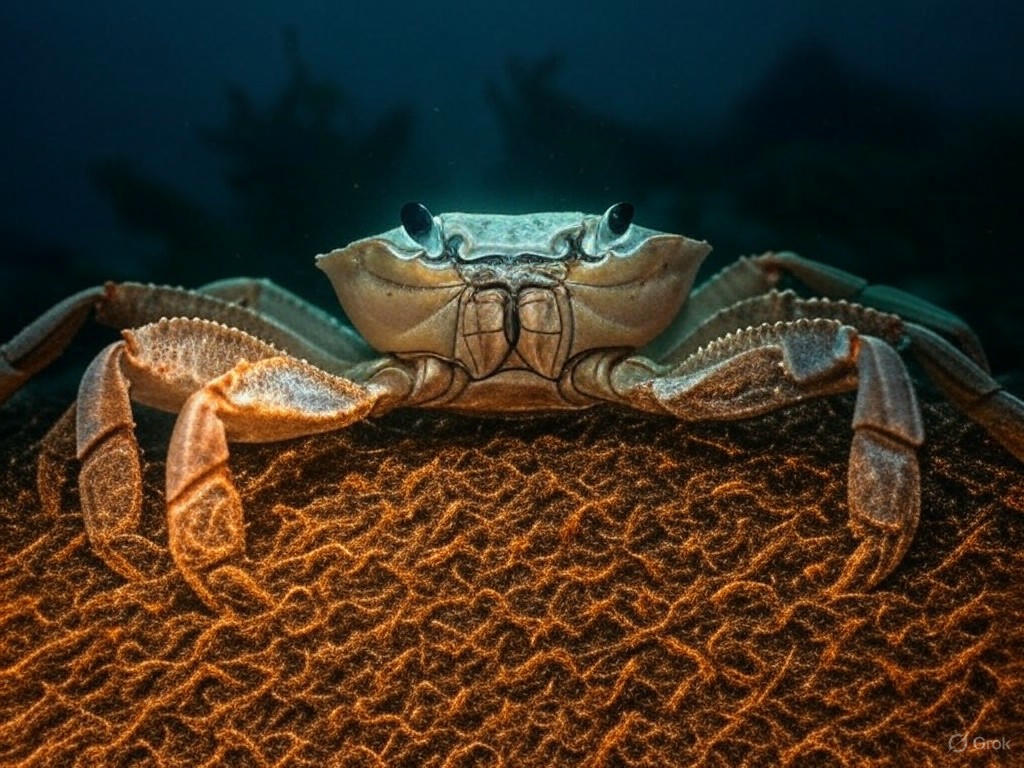Glowing Wonders: The Mystery of the Light-Emitting Mangrove Crab
In the shadowy depths of Southeast Asian mangroves, a tiny marvel of nature has captured the attention of marine biologists worldwide. The Parasesarma eumolpe, a small crab species, possesses an extraordinary trait: it emits a faint, eerie light from its forehead. This bioluminescent display, glowing like a lantern in the dark, has puzzled scientists for years, sparking curiosity about its purpose in the crab’s survival. What could drive such a unique adaptation in a creature so unassuming?
These crabs, often no larger than a human thumb, thrive in the murky, tangled ecosystems of mangrove forests. Their habitat is a challenging one, filled with predators, limited visibility, and fierce competition for resources. The light they emit is not a random quirk of nature but likely a critical tool for navigating their complex world. Researchers have observed that the glow, visible only in near-total darkness, could serve multiple functions. One leading theory suggests it acts as a form of communication, allowing crabs to signal to potential mates during the pitch-black nights of their swampy home. Another hypothesis points to a defensive mechanism, where the sudden flash of light might startle predators, giving the crab a fleeting chance to escape into the undergrowth.
Beyond these theories, some scientists speculate that the bioluminescence could play a role in foraging. Mangrove floors are often cloaked in darkness, even during the day, due to dense canopy cover. The faint glow might help the crab locate food or detect nearby movement, offering a slight edge in an environment where every advantage counts. To test these ideas, researchers have conducted experiments in controlled settings, mimicking the crab’s natural habitat. They’ve noted that the light intensifies in response to specific stimuli, such as the presence of other crabs or sudden disturbances, hinting at a purposeful, reactive behavior rather than a passive trait.
Yet, despite years of study, the exact mechanism behind this glow remains elusive. The light is believed to stem from a chemical reaction within specialized cells on the crab’s forehead, similar to the bioluminescence seen in deep-sea creatures like the anglerfish. However, unlike their oceanic counterparts, these crabs live in a relatively shallow, terrestrial-adjacent environment, making their adaptation even more intriguing. Scientists are now turning to genetic analysis to uncover the specific proteins or enzymes responsible for this phenomenon, hoping to draw parallels with other glowing species.
As research continues, the glowing mangrove crab stands as a reminder of nature’s endless creativity. Each discovery about this small creature sheds light not only on its own survival strategies but also on the broader mysteries of evolution. While we may not yet fully understand why this crab illuminates the night, its story inspires awe and underscores the importance of preserving the delicate ecosystems where such wonders are found. The mangroves, often overlooked, are treasure troves of biodiversity, and protecting them ensures that future generations can marvel at nature’s glowing secrets.


